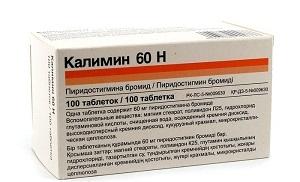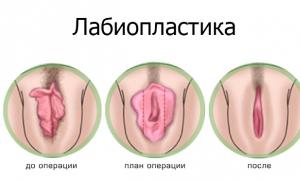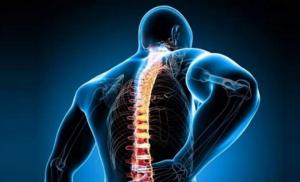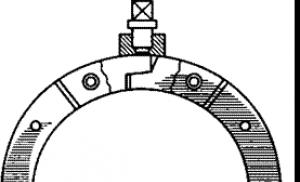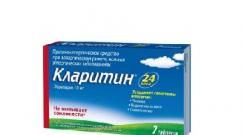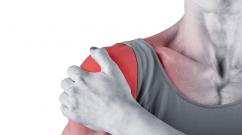Head training: exercises for the blood vessels of the brain and neck. Exercises to improve blood circulation
Find out how to improve blood circulation in the brain and how to train capillaries to eliminate cerebral vascular spasms.
The content of the article:
Vascular dystonia or impaired blood flow can be genetic, but most often this problem occurs due to an incorrect lifestyle. Excessive nutrition, smoking, drinking large quantities of alcoholic beverages, lack of physical activity are the main reasons for the narrowing of the lumen of blood vessels and increased blood pressure. To normalize blood flow, not only medications can be effective, but also special exercises to improve blood circulation.
Exercises to train capillaries

Thanks to small vessels, which are called capillaries, each cell of our body receives the necessary nutrients and is freed from waste products. Scientists have found that the total length of capillaries in our body is more than 60 thousand kilometers.
If narrowed vessels appear along the path of blood flow, then metabolites cannot be removed from the cells and this becomes the main reason for the development of various ailments. Japanese scientist Katsuzo Nishi studied the human circulatory system for a long time and created a whole system of exercises to improve blood circulation.
The simplest way to normalize blood flow is an exercise such as vibration. It should be performed immediately after waking up and you don’t even have to get out of bed to do it. Just lift your limbs up and shake them for two minutes. These movements should be frequent and have a small amplitude. As a result, the capillaries are subjected to vibration massage, and a redistribution of lymphatic fluid occurs, cleansing the body of toxins.
The second simplest exercise for improving blood circulation, used by the Japanese scientist, was called the “goldfish”. While remaining in bed in the morning, place your hands under your head in the area of the fourth vertebra, pull your legs towards you. After this, tense your whole body and begin to perform vibrating movements, imitating fish. This movement not only improves blood flow, but also increases the tone of the nerve fibers located in the spinal column. This simple exercise for blood vessels should be done regularly and the exercises should be performed in the morning and evening.
Exercises to improve cerebral circulation

Among the main causes of cerebral vascular spasms, scientists identify vascular dystonia and blood flow disorders. The symptoms of this disease are known to many people:
- constant headaches and changes in blood pressure;
- speech and coordination disorders;
- tinnitus;
- increased fatigue and decreased performance.
To improve blood flow in the brain, during morning exercises it is necessary to perform several special movements, for example, bending to the sides, turning the head, somersaults, and inversions. If at this moment you begin to experience discomfort, then the gymnastics must be interrupted.
Now we will look at a simple set of exercises that will help you normalize blood flow in the brain:
- Take a standing position with your feet at the level of your shoulder joints. Start rotating your head clockwise and backward. The duration of the exercise is two minutes.
- Without changing your starting position, raise your hands up and interlace your fingers. Start doing forward bends, doing 8 repetitions.
- From a standing position, swing your legs to the sides.
- This exercise is similar to the previous one, but you need to bend your knee joints.
- Lie on your back with your limbs extended along your body. Without bending your knee joints, raise your legs as high as possible and support your lower back with your hands. You must hold the “Berezka” stance for five minutes.
Exercises to improve blood circulation in the legs

A person pays for his ability to walk upright with a high load on the veins of his legs. If the blood vessels of the lower extremities are weak, then blood stagnation and subsequent serious problems with the veins are possible. To avoid this, you need to walk. There are very effective exercises for improving blood circulation in the legs, which ideally should be performed in water.
If you have the opportunity, start visiting the pool. Otherwise, you can simply pour plenty of cool water on your feet. As a result, blood vessels are stimulated, and they begin to actively open and contract. The tone of the vein walls increases and they become more elastic. Here is a simple set of movements that will allow you to keep your veins in good condition:
- Take a standing position with your feet at the level of your shoulder joints. From this starting position, bend forward, trying to touch the ground with your fingers. Make sure that your legs do not bend at the knee joints during the exercise.
- Take a sitting position on the ground, spreading your legs as wide as possible. Your hands should be at chest level. Bend forward, reaching the ground with folded hands. The legs should not bend, and after every 8-10 repetitions, rest for 60 seconds.
- Stand on your knees and, stretching your arms to the sides, begin to walk on your knees in different directions. If you are very tired, lie down on the ground and rest.
- eating before exercise;
- hum or noise in the ears;
- feeling of weakness in the legs;
- low blood pressure.
Exercises for the cervical region

The neck is the most important part of our body, because the main arteries through which blood flows to the brain and spine are concentrated there. Weak neck muscles force us to constantly strain to keep our heads straight. As a result, blood vessels are compressed and nerve endings are pinched. All this leads to impaired blood flow, headaches and other troubles.
By strengthening your neck muscles, you will restore the functioning of your blood vessels and be able to forget about many problems. We recommend performing turns, rotations and tilts of the head. However, it is important to remember that these movements must be smooth, and it is also important to breathe correctly. Excellent results can be achieved by Chinese gymnastics, which does not involve sudden movements. You can do exercises to improve blood circulation anywhere, even at work.
Let's look at a set of simple movements that will allow you to improve blood flow in the neck:
- Stand against a wall, pressing all parts of your body tightly against it. While inhaling, you need to press into the wall with all your might, while straining your neck muscles. Hold your breath and hold the position for five or six seconds.
- Sit on a chair with your palms on your forehead and press them hard, forcing your head back. In this case, it is necessary to tense the neck muscles and resist the movement of the head. In this position, you need to stay for 5 or 7 seconds, while holding your breath. Then rest for a quarter of a minute and do the exercise again. A total of 3 to 7 repetitions should be done.
- This movement is similar to the previous one, but the head must be tilted to the sides. We recommend doing the exercise several times a day.
- Begin to slowly turn your head from one shoulder joint to the other and pause at the end points of the trajectory. In total, you need to do from 8 to 12 repetitions.
Exercises for training blood vessels and heart muscle

To maintain high performance of the heart muscle and blood vessels, it is necessary to conduct regular training. First of all, we are talking about older people whose physical activity is low. Moderate physical activity and sufficient oxygen are essential for an elderly person.
Start exercising immediately after waking up. To get the blood circulating, perform rotational movements with your feet and hands. Then move on to bending, twisting and squats. It is very important at this moment to control your heart rate. When an untrained person's pulse is in the range of 90 to 100 beats per minute, the body cannot receive enough oxygen.
Here is a simple set of exercises to improve blood circulation:
- Rise up on your toes and walk with your knees raised high.
- Place your feet at the level of your shoulder joints, raising your arms up and clasping them together. By tilting the body to the left, the leg of the same name is retracted in the same direction. Perform the exercise 8–9 times in each direction.
- Spread your arms to the sides and start tapping your palms on the opposite shoulder joint. In this case, the body should be straightened. If there are no unpleasant sensations in the area of the heart muscle, then increase the pace of pats, bringing their number to 50.
- Lower your arms down, squeezing your legs tightly. Make a full circle with your hands, first in one direction and then in the opposite direction. The number of repetitions ranges from 10 to 50.
- Take a supine position with your knees bent at right angles. After this, perform the “bicycle” exercise, and your breathing should be even and without delay.
- Without changing the starting position, straightened legs must be raised to a height of 40 centimeters above the ground. Perform cross-shaped movements with your legs, and the number of repetitions should be from 20 to 25.
What exercises you need to do to improve blood circulation, see here:
Most often, problems with blood circulation are solved with medication. Drugs intended to dilate blood vessels and are quite effective, but have a number of serious side effects and contraindications. Exercises to normalize blood flow completely safe. They can be performed at any age, and it turns out not only preventive, but also therapeutic effect:
- memory impairment is prevented and treated and other cognitive functions of the brain;
- coordination improves movements;
- the risk of developing various vascular pathologies is reduced, such as strokes and thrombosis;
- vision is restored;
- relieves pain in osteochondrosis, the mobility of the spinal column increases.
With regular exercise, the effectiveness of medications prescribed by your doctor also increases.
It is advisable to train twice a day. A set of exercises performed in the morning will help you cheer up and get into the mood for work, and an evening session will promote relaxation and a good night's rest.
Improving blood circulation in the brain: features of the complex and technique of implementation

It is possible to influence blood circulation in the head only in a comprehensive manner. That is why the list of useful movements includes not only bending and turning the head, but also lunges and squats. To activate blood flow and increase the lumen of blood vessels, you need to make your heart work faster.
As for the technical side of the issue, all movements must be performed smoothly and carefully without making sudden movements or jerks. Each exercise should be repeated at least ten times. Breathe during training you need deep and smooth. This will ensure the flow of oxygen and maintain rhythm: the movement is performed while exhaling, and returning to the original position while inhaling.
As the muscles strengthen, the load needs to be increased. This is done both through a greater number of repetitions and the number of approaches. Beginners are advised to perform no more than one set of each exercise.
If pain occurs or the general condition of the body does not allow you to exercise fully, you should reduce training to a minimum, and after recovery, return to your usual rhythm.
The most effective exercises
This complex, like any training program, begins with a mandatory warm-up. In this case, it is advisable to walk around a little and rub the collar area with your fingers until you feel warm. After this you can proceed to the main part:
- Standing straight with relaxed arms, your head should be slowly tilted alternately to the right and left. The movement is performed with the maximum possible amplitude, but without pain. If mobility is limited, do not persist.
- From the same starting position the head first leans back freely and then leans forward. You need to touch your chin to your chest. If you have problems with balance, you can do bends while sitting.
- Again performed while standing alternate turns of the head in both directions. The chin should ideally be placed in line with the shoulder, but if this is not yet possible, there is no need to make additional efforts.
- The following exercise is performed shoulders. First you need them raise as high as possible, and after returning to the original position – take it back.
- Another shoulder exercise is designed to develop the muscles of the shoulder girdle and improve blood circulation. In this case, first we execute circular movements of the shoulders with arms down(round trip), then the palms are placed on the shoulders and the cycle repeats. Complete the rotation element with straight arms spread to the sides.
- Standing straight and arms down freely downwards, you need to do p alternate turns of the body in both directions with maximum amplitude. In this case, the pelvis should remain motionless.
- Perform a series of torso bends: first from left to right, keeping your arms along your body, and then back and forth. In the latter case, the hands are on the belt.
- Standing straight and placing your palms on your waist, do several rotational movements of the pelvis in different directions. From the same starting position, perform the prescribed number of lunges on each leg.
- Squats will also help to activate blood circulation. There is no need to lower your pelvis too deeply - your thighs should be parallel to the floor at the lowest point. During a squat, your arms can be extended forward to maintain balance.

Several are perfect for a cool down. stretching exercises.
- First you need stand on your toes and stretch up behind raised hands.
- Then, keeping your legs straight, do deep forward bend(it is advisable to touch the floor with your palms).
- At the very end you can do deep plie - analogue of squats, but with legs apart and feet spread outward.
Massage of the collar area and head stimulates blood circulation well and increases vascular elasticity. Manipulation consists of stroking and squeezing movements of the hands.
- Stretch your shoulders and neck need to from the periphery to the center(spine).
- head massaging fingertips, slightly squeezing and relaxing them, while simultaneously making rotational movements with your hand.
Self-massage in this case is as effective as the actions of an assistant.
Classic head massage (video)
Self-massage of the neck (video)
Complex efficiency is enhanced by proper organization of work and rest schedules, proper diet planning and taking vitamin complexes. Long walks are also useful, especially in forested areas. Improves vascular tone and hardening procedures(contrast shower, for example). In combination with exercises to improve blood circulation in the brain, all these activities help maintain physical and mental health into old age.
Yoga practitioners feel from their own experience how the head “clears” after classes, how much lighter it becomes, and what amazing metamorphoses occur in thinking as a result of practice. Our brain is not a machine, and it needs rest, especially after intense work. this can be different - passive, active, with the participation of alcohol or sleep. If you really want to improve brain function (and not get a temporary effect), try performing yogic asanas aimed at improving blood circulation, renewing brain cells, and stimulating brain function. I have prepared for you a selection of asanas, the regular implementation of which will qualitatively change the functioning of your brain.
Warning: if you have chronic diseases, a history of spinal or joint injuries, consult your doctor before performing asanas. It is also not recommended to perform asanas alone; I have only highlighted for you those poses that are most useful for brain function, but it will be difficult for an unprepared body to perform them. Practice yoga regularly, paying special attention to these asanas and performing them in combination with others.
The power of inverted asanas
At the energetic level, inverted asanas allow you to temporarily change a person’s direction to the opposite of its usual flow. Yogis say that while a person stands on his feet, he ages, and when he turns upside down, he rejuvenates. At the physiological level, performing inverted asanas, first of all, improves blood supply to the brain. Thanks to gravity, blood rushes to the brain, saturating it with oxygen, cleansing cells of toxins and improving coordination between parts of the brain. Additional blood supply to the pituitary gland increases the efficiency of its functioning.

The Downward-Facing Dog pose is known to almost everyone - it is one of the basic asanas of hatha yoga. When performing it, it is important to remember the harmonious distribution of the load between the legs, arms and torso. Your goal is to stretch the spine as much as possible and remove deflections in the lumbar region, otherwise the effect of the asana will not be complete. A detailed description of the asana can be read. By regularly practicing Adho Mukha Svanasana, you will give your brain the rest it needs, relieve fatigue and increase the activity of your main working tool - the brain. An additional “bonus” is the invigorating effect of Adho Mukha Svanasana; you can do it in between work instead of drinking coffee.

“The mother of all asanas” is what this yoga pose is called. Salamba Sarvangasana, when performed regularly, helps get rid of many diseases of the internal organs. But, since we are interested in the brain, let us dwell in more detail on the benefits that this asana brings to it. Firstly, those who engage in intense intellectual activity are familiar with headaches caused by overexertion. By performing Salamba Sarvangasana, you will forget about headaches, insomnia, and calm your nerves. The asana also relieves high blood pressure and calms the mind. You can read the technique for performing it.

Sirsasana or headstand is not the easiest asana to perform, but it is one of the most effective for improving brain function. It is not recommended for beginners to practice it on their own; do it under the supervision of a yoga teacher or an advanced practitioner. By inverting your feet up, you increase blood flow to the brain, as in other inverted asanas. Shisrasana cures headaches, slows down the aging process in brain cells and. You can read how to perform shirshasana.

A combination of shirshasana (headstand and handstand) and padmasana - Lotus pose. If you have already mastered the Lotus pose and shishrasana, perform this complicated and very effective version. For those who experience mental fatigue very quickly, this pose is especially useful. Due to the flow of clean blood to the brain cells, thoughts are cleared, the mind is sharpened, and mental stress goes away.

If performing asanas affects the functioning of muscles, ligaments, joints, internal organs and systems, then mudras have an effect on the endocrine system and are also used to control the psychophysical states of a person. Viparita Karani mudra helps to renew and rejuvenate the entire body, including the brain. The combination of performing mudra with yourself when you are young and healthy is especially effective. Read how to perform mudra.
Yogis believe that as long as a person stands on his feet, he grows old, and when he turns upside down, he becomes younger. Inverted asanas, i.e. Yoga poses, head down, allow you to temporarily change the usual direction of a person’s vital energy to the opposite. Upside down poses improve blood supply to the brain, saturating it with oxygen, cleanse cells of toxins and improve interaction between parts of the brain. Practice yoga regularly, paying special attention to these asanas. But not all people benefit from these poses. Almost all inverted asanas are contraindicated for high blood pressure and dizziness.

Starting position: Vajrasana pose, place your hands on your hips. The upper body is straight and relaxed. Inhale - raise both arms above your head. Exhale, keeping your back straight, bend your upper body and arms forward until your hands and forehead touch the floor. When your palms touch the floor, stretch your arms forward as far as possible. The buttocks remain on the heels. Breathe calmly, remaining in this position for a while. Relax your entire body, especially your shoulders, neck and back.
Inhaling, lift your upper body and arms. Keep your back straight. Exhale and return to the starting position.
Do the exercise 3 times.
Effect: Exercise improves blood supply to the head and nourishes the eyes. Helps relieve fatigue and promotes concentration. Anxiety and depression are reduced due to the calming effects of exercise. The back muscles relax, breathing deepens in the lungs.
Attention! Contraindication: Avoid this asana if you have high blood pressure, glaucoma or dizziness.
 Starting position: stand straight, legs together. Inhaling, move your arms straight in a wide arc behind your back and clasp them behind your back. Exhale and bend your upper body forward. Bring your head as close to your knees as possible. Gently move your hands up behind your back. Breathe calmly and stay in this position as long as you feel comfortable. Then, while inhaling, return to the starting position. Perform the exercise up to 10 times in one session with different interlaces of your fingers.
Starting position: stand straight, legs together. Inhaling, move your arms straight in a wide arc behind your back and clasp them behind your back. Exhale and bend your upper body forward. Bring your head as close to your knees as possible. Gently move your hands up behind your back. Breathe calmly and stay in this position as long as you feel comfortable. Then, while inhaling, return to the starting position. Perform the exercise up to 10 times in one session with different interlaces of your fingers.
Effect: The asana is especially beneficial for the healthy development of the child. Relaxes the back muscles and helps to cope with a rounded back. Promotes mobility of the shoulder joints and regulates blood circulation, especially to the head.
Attention! Contraindication:
Mount Everest Pose

This pose is also called “Downward Facing Dog Pose.”
Starting position: Vajrasana pose. As you inhale, rise to your knees, stretch your arms forward. Exhale and place your palms on the floor under your shoulders. Tuck your toes and lift your butt high. Legs straight, weight on hands and toes. Look towards the navel. Imagine that your body is a mountain with two slopes and the top at the tailbone. Make sure there is no arch in your lower back. Breathe evenly and stay in this position as long as you feel comfortable. Exhale and lower your knees to the floor. Sighing, kneel down. Exhale and return to the starting position.
Effect: The asana refreshes the whole body and strengthens the arms, legs and back muscles. Increases blood flow to the head. Regulates the circulatory system and balances the body's energy. The pose is useful for people with lumbosacral radiculitis.
Attention! Contraindication: Avoid this asana if you have high blood pressure, dizziness or wrist pain.
Bend forward while sitting on your heels

Starting position: Vajrasana pose. The body is straight and the hands rest on the hips. Inhaling, raise your arms up, and then put them behind your back and grab your left wrist with your right hand. Exhale and bend forward from your hips, keeping your back straight, until your forehead touches the floor. The buttocks remain on the heels. Breathe evenly and calmly, relax. Stay in this position for as long as comfortable. Inhaling, slowly bring your body upright while raising your arms above your head. Exhale and return to the starting position.
Effect: The pose calms the nerves, increases blood flow to the head, improves concentration and stimulates digestive function.
Attention! Contraindication: Avoid this asana if you have high blood pressure and dizziness.
Pada Prasara Puranutthanasana

Starting position: Standing with legs wide apart. Inhaling, raise your arms above your head. Exhale and slowly lean forward. Place your hands on the floor and then your head. Breathe evenly and concentrate on your whole body. Distributing your body weight evenly over your head and legs, grab your ankles with your hands. Hold the pose for some time. Inhale, lower your palms to the floor and return to the starting position.
